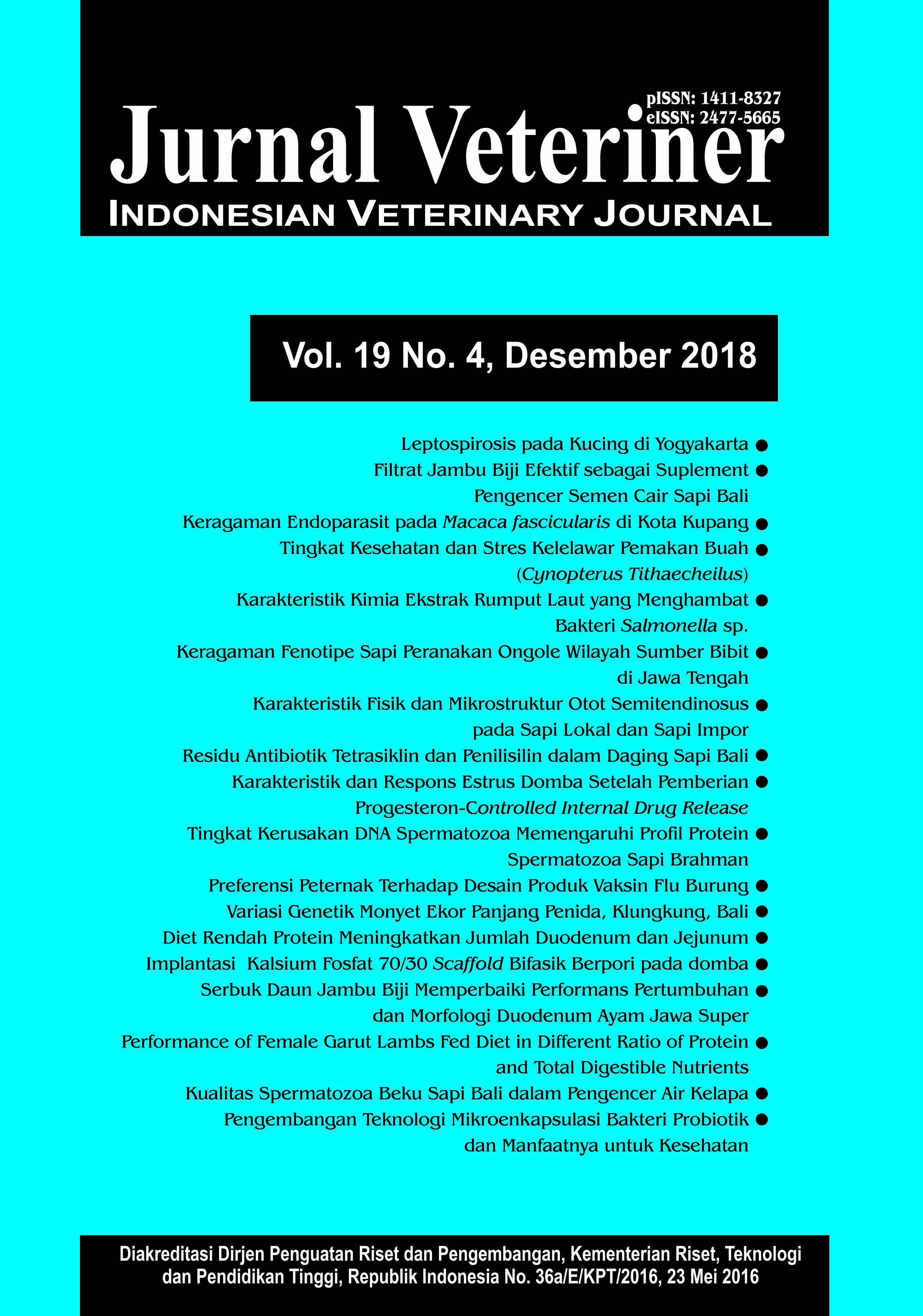Gambaran Darah dan Kalsium Domba Lokal yang Diimplantasi Scaffold Bifasik Kalsium Posfat Berpori 70/30 (BLOOD AND CALCIUM PROFILE OF LOCAL SHEEP IMPLANTED WITH POROUS BIPHASIC CALCIUM PHOSPHATE SCAFFOLD 70/30)
Abstract
The aim of this research is to study the biocompatibility biphasic calcium phosphate with alginate combination by evaluating blood and calcium concentration. This study used three male sheeps, age 1.5 year old with an average weight of 20 kg. Anaesthesia is using an intravenous anaesthetic combination of 10% ketamine HCl (2 mg / kg BW) and 10% xylaxine HCl (0.1 mg / kg BW). The implant material is grown on the right sheep tibia. As a control, the left sheep tibia was made of defects but not implanted. The incision orientation is the straight line of the tibial femoral joint at medial, 3.6 cm from caudal to cranial and perpendicular from that point 5.7 cm to the distal direction. The defect is made using a bone drill to make a hole according to the size of the implant (diameter 0.8 cm and 0.4 cm long). Blood parameters (erythrocytes, hemoglobin (Hb), hematocrit (Hct), total leukocytes and differentiation of leukocytes; neutrophils, eusinophils, basophils, lymphocytes and monocytes) and calcium evaluations were performed on days 0, 7, 30, 60 and 90 post implantation. Based on complete blood count no significant of blood parameters. Based on the calcium value, there are significant values on the 30th and the 90th. Blood calcium concentration were decreased from day 0 to 90.



















